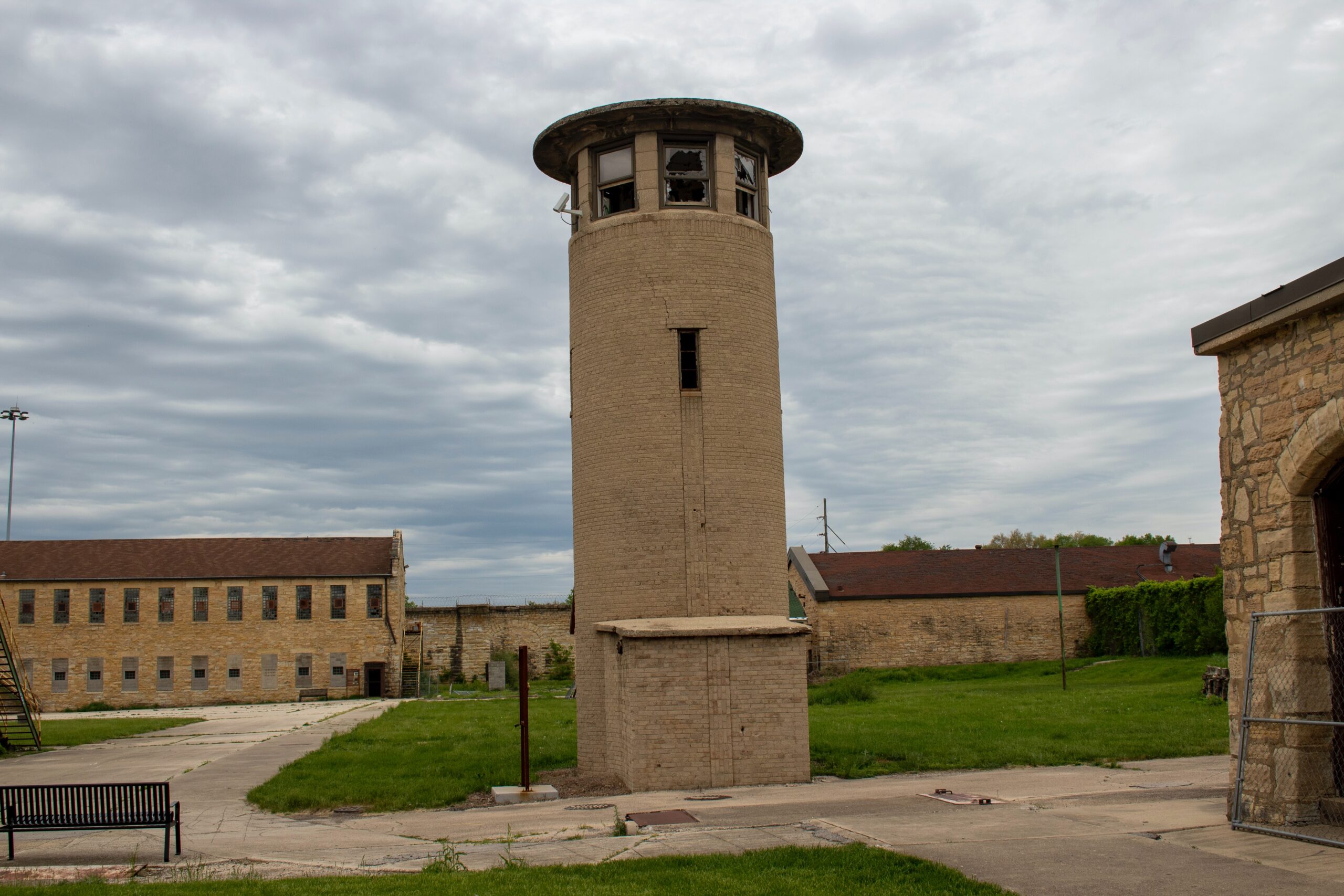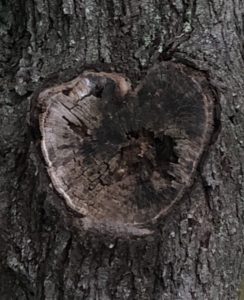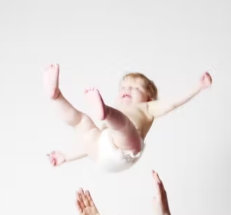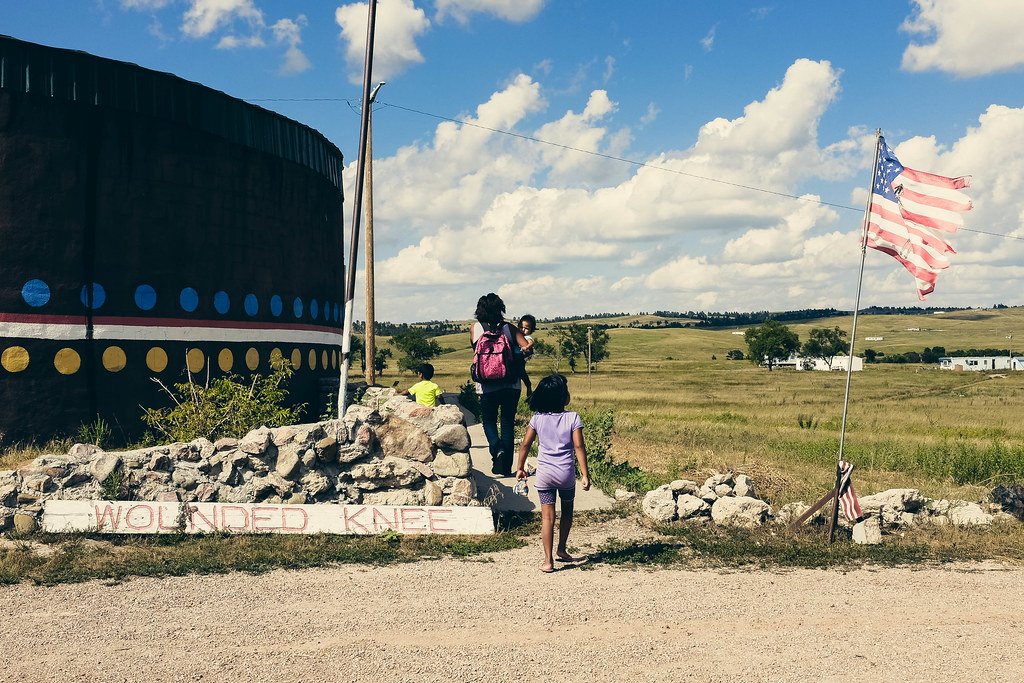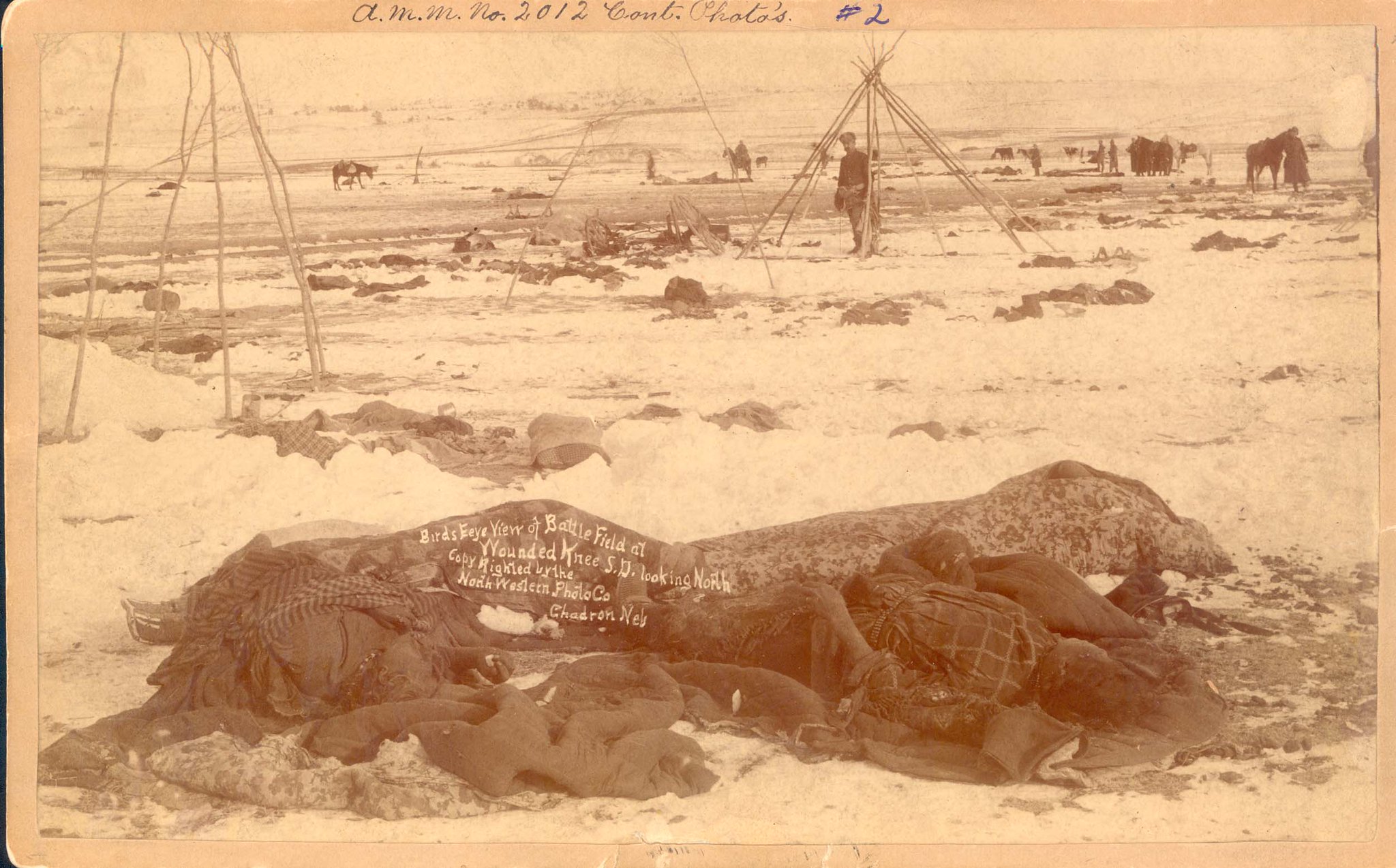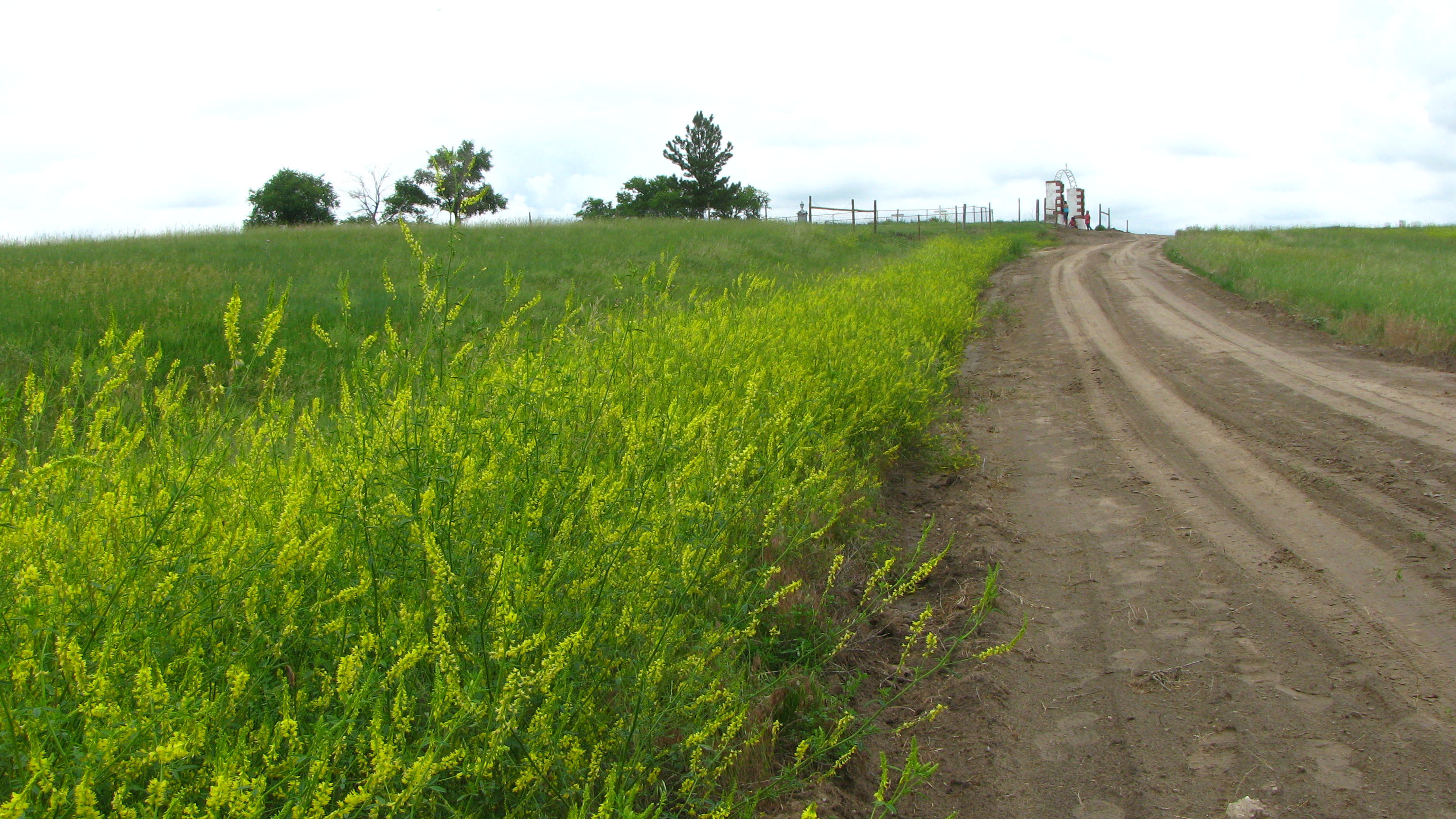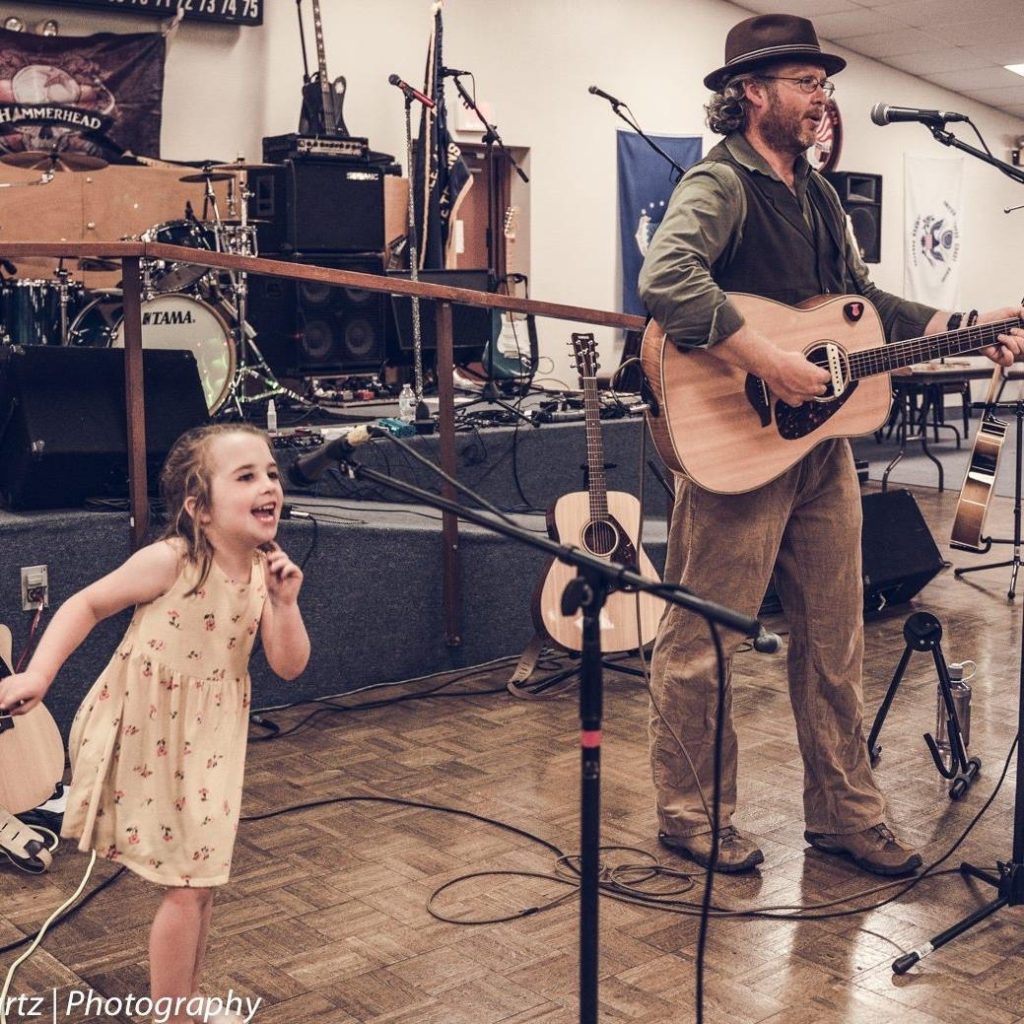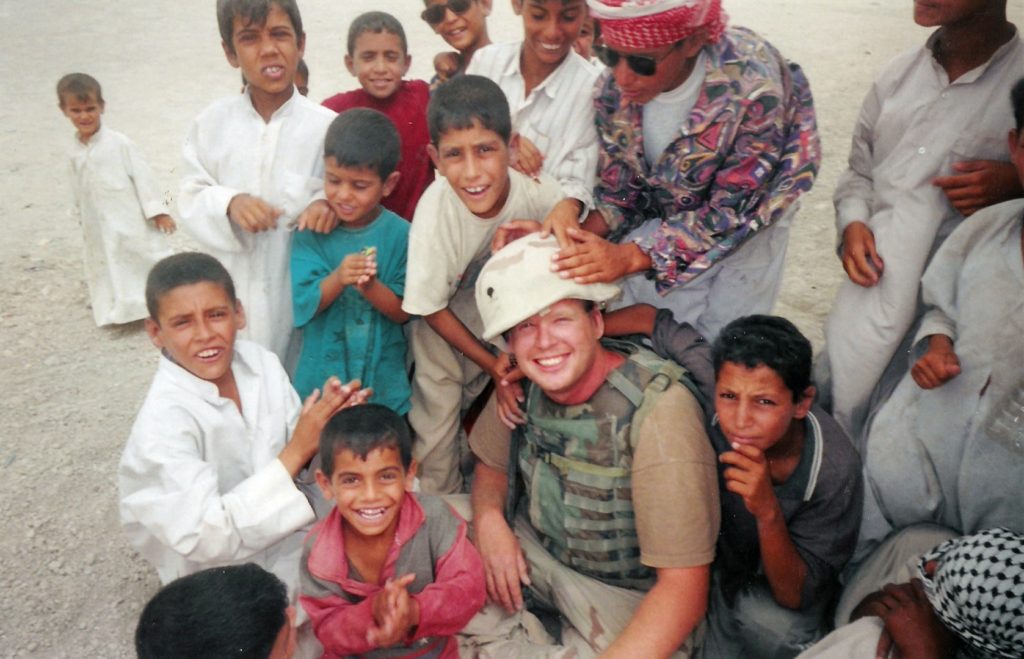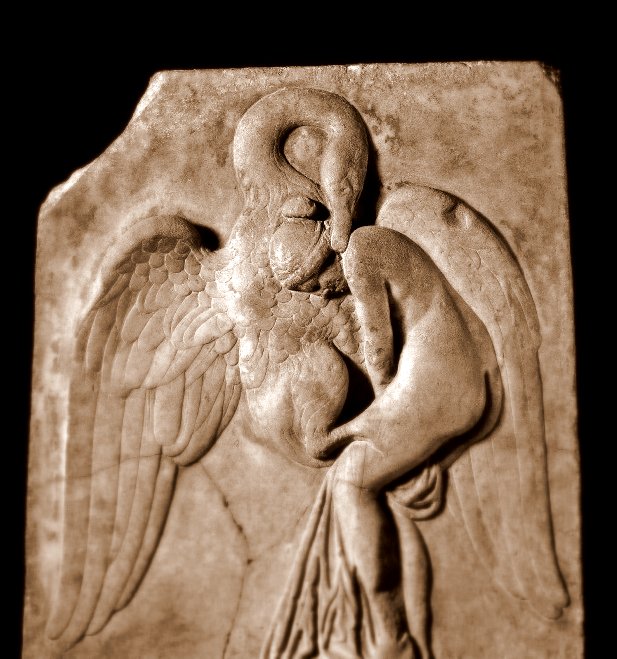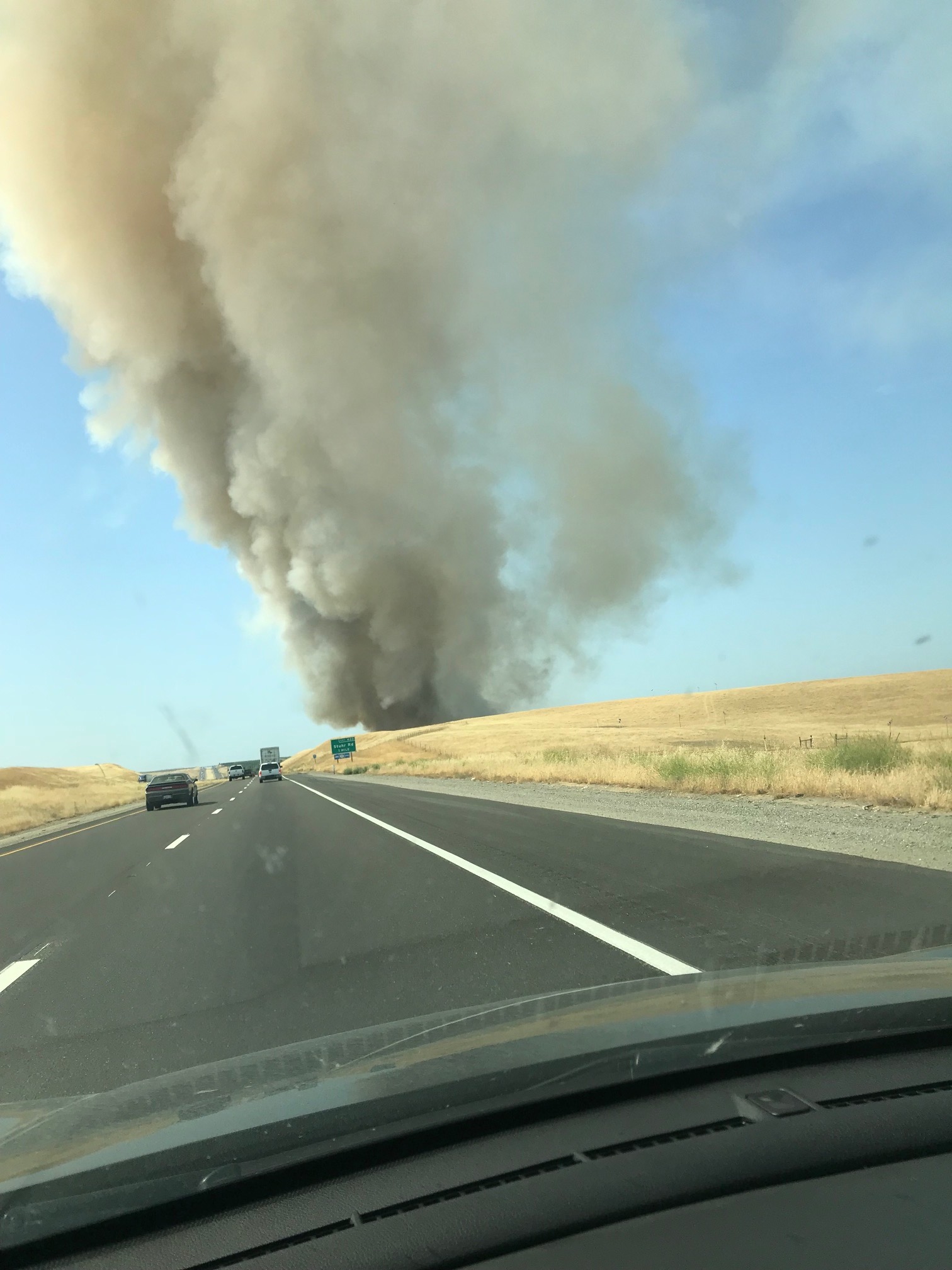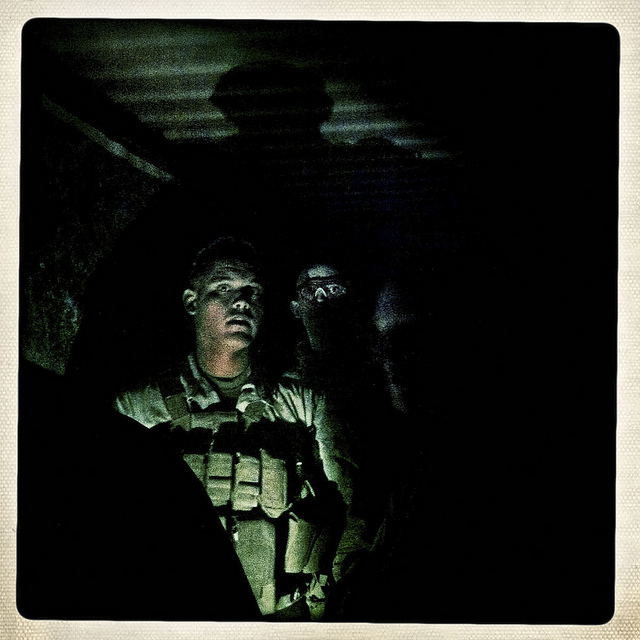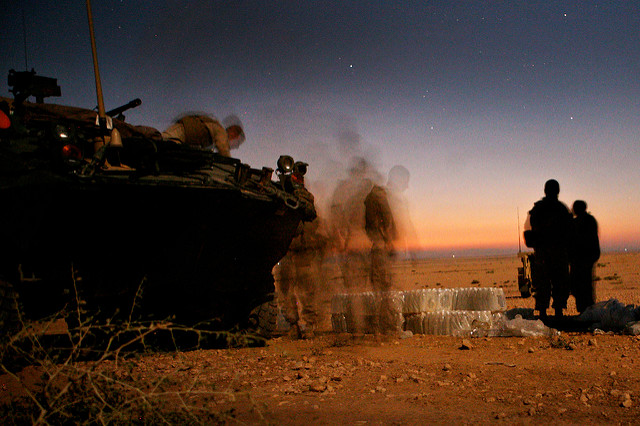New Nonfiction from Per-Olof Odman: “Mystery Mountain”
In the remote and forgotten northwestern corner of Vietnam looms the vast, rugged and rain-drenched Hoang Lien Mountains. Here, Vietnam’s tallest summit, the 10,326-foot-high Fan Si Pan, towers above the rest. On the cold morning of March 30, 1994, from the mountainous village of Sa Pa at about 5,000 feet above sea level, I could discern in the distance row after row of the ever-steeper mountains, but dense clouds obscured the higher peaks—among them the mysterious Fan Si Pan.
Shouldering our backpacks and leaving Sa Pa, Ngyuen Thien Hung, my mountain guide, and I set off for our ascent of this surprisingly little-known mountain. Passing the stark ruins of a French villa, we descended into a deep valley and passed terraced rice paddies plowed by Hmong tribesmen. The breaths of the water buffaloes rose in small clouds. A passel of black pigs scattered as we approached.
East of Fan Si Pan at the bottom of the valley, altitude 4,100 feet, we balanced our way along a swaying bamboo bridge above a bouldery rushing river. My guide led me up the other steep side. His backpack and trousers looked familiar; I was later to learn why. After two hours of steady climbing, following a narrow, slippery trail through the low rainforest, and crossing several rapid streams, it was quite evident that Hung was stronger and in better shape than I was. My improvised bamboo walking staff had made the climbing less difficult, though I was glad when we took our first rest stop.
Until now we had not said anything—we could not speak each other’s language. We sat in a cool bamboo glade. I was 50 years old, and Hung was 47. He was courteous, but also private, reserved. Hung was muscular, of medium height; at six feet, I was considerably taller than him. I saw in Hung, as I did in most Vietnamese, a strength I found intriguing.
Hung lit a cigarette, and he started to “talk” using the pencil and paper I had handed him, doing gestures and bodily movements, and uttering sounds. I learned what I had hoped for all along: I was climbing Fan Si Pan with my former enemy, a North Vietnamese Army combat veteran; an NVA. Hung drew a map of Vietnam, wrote place names, dates, and units, and started to “tell” me that he had spent eight years fighting the Americans and the South Vietnamese, often while sick, cold, and hungry. Starting in 1967, he had humped supplies along the Ho Chi Minh trail. From 1971 to 1973, Hung, then an infantry soldier, had fought the Americans in the Central Highlands, and then the South Vietnamese Army. As a junior lieutenant, and a tank commander, with the 12th Regiment, 312th Division, he took part in the final rout of the South Vietnamese Army, and on April 30, 1975, victoriously drove his tank into Saigon. Hung was never seriously wounded. The war was over, but Hung was ordered to continue to serve in the mountainous northwestern part of Vietnam where he was from. When he was discharged in 1984, Hung moved back home to Sa Pa, a small, picturesque trading town near the Chinese border. To me it seemed quite evident that Hung was proud of the fact that he had fought for his country.
Using the pencil and the paper, and my more expressive way of “talking” I tried to inform Hung that I had been born in Sweden in 1943 and had grown up there, that I had dropped out of high school and worked in mines, and that in 1965 I had been drafted into the Swedish Army to serve the usual ten months. I told Hung that I had really enjoyed my life in the military. For the first time in my life, I had been the best at something: assault rifle marksmanship. Shortly before my discharge from the Swedish Army in April 1966 I had decided, solely for adventure, to fight for the United States in the Vietnam war. That I did not foresee much of a future living in Sweden added to my decision.
By drawing a simple world map, writing months and years, and using gestures I told Hung that I had put my war plans on hold when I was offered an exciting job in West Africa to do work with a few Swedish geologists and prospectors in the triple canopy rainforests of the mountainous part of Liberia. In March 1967, after close to one year of colonial style exploits in Africa, I committed myself to fight in Vietnam. I visited the U.S. Embassy in Monrovia, the capitol of Liberia, applied for, and easily obtained an immigrant visa.
My Swedish coworkers in Liberia had tried to talk me out of going to Vietnam; they thought I was crazy. To this day I still carry some of that craziness within me. It made me stubbornly continue to communicate with Hung.
I tried hard to let Hung know more about my life. My impression was that he pretty much understood that in late May 1967 I had flown one-way from Monrovia to JFK. On the same day that I arrived in New York, I went to the Times Square recruiting station and talked to the Marine recruiter about a two-year enlistment. Three weeks later I swore to serve two years in the U.S. Marine Corps. At 3 A.M. the following day I was “welcomed” to Parris Island.
Following six months of boot camp, and infantry and jungle warfare training, I finally arrived in Vietnam on Christmas Eve in 1967. I was assigned to serve as a rifleman with 2nd Platoon, Delta Company, 1st Battalion, 26th Marines in the remote Khe Sanh Combat Base. My regiment and additional Marine and Army units endured the North Vietnamese Army’s death-dealing siege of Khe Sanh which lasted from January 21, 1968, to well into April that year. Hung let me know that he had carried supplies in support of the siege. He acknowledged that the NVAs had lost more than ten thousand killed. I told Hung that the Marines and the US Army had lost close to one thousand killed.
After the siege, my battered battalion fought the NVAs in depopulated areas in the northern part of South Vietnam. At 10 in the morning on June 7, 1968, my platoon walked right into an NVA ambush. Two of us were killed instantly, one third of us were wounded. I wondered what Hung, my “enemy,” thought about the siege and the ambush. Horror? Revenge? I kept in mind that Hung and his army had won the war.
By gestures, body language and uttering sounds, I “explained” to Hung that when the NVAs opened fire I had thrown myself on the ground and rapidly fired my M16 on their muzzle flashes. After firing several rounds, my body was struck extremely hard three times in quick succession. I collapsed, feeling that I was dying. I tried to yell, but soon lapsed into unconsciousness.
I pointed to where on my body I’d been hit, and I think Hung understood that the whole right side of my body had been paralyzed due to seven to ten 1⁄8- to 1⁄2-inch pieces of shrapnel which, with the force of a sledge hammer, had torn open a large hole in the left temporal part of my scull, and penetrated two to three inches deep into my brain. One AK-47 bullet, which had lost velocity when it ricocheted against something hard entered the left front of my neck and punctured my left jugular vein. The profuse bleeding was life-threatening. Other ricocheted bullets had penetrated my upper left chest and pierced my left lung. Nine pieces of shrapnel tore into the back of my neck lodging nearly an inch deep in the traumatized flesh.
Covered in blood, ashen-faced and lifeless, I was dragged next to our two dead Marines. My life was saved by someone who saw that I still might be alive, the crew of the medevac chopper on the fifteen-minute ride to the Naval Field Hospital in Danang, and by the surgeons who operated on me.
I was medevacked back to the United States, and after a good deal of physical rehabilitation during the summer and the fall I managed to regain much of my physical strength, and I continued to stay physically active in spite of the somewhat weakened right side of my body. The Marine Corps retired me due to disability, and the VA rated me 100% disabled. To challenge myself, in late 1970 I began parachuting. In the 1970s and the early ’90s I did extensive backpacking trips, sometimes solo, in arctic wilderness regions, as well as in mountain ranges at lower latitudes.
During three weeks in early 1992 I travelled on my own from the south to the north thru the peaceful, picturesque country of Vietnam. Khe Sanh, which I had survived 24 years earlier, was not picturesque; the abandoned American combat base was overgrown and unrecognizable, and, as I had promised my wife, I never stepped on the scattered unexploded ordinance.
Hung nodded his head; the way he looked me in the eye made it clear that he had gotten the gist of my life. I surmised that to Hung, as well as to myself, it was clear that we were not just a poor local guide and his rich Western client–we were two former enemies who shared a violent past, and now fought together to conquer a mountain.
The idea of climbing Fan Si Pan, and the journey to it had attracted me for several years. Its ascent appealed to my love of wilderness and sense of adventure, and it would help me to deal with my physical disability. In the early 90s I had started to get spasms at night in my right leg. To climb Fan Si Pan would also help me to come to grips with my Vietnam war experiences. I became convinced that the ultimate reconciliation between me and Vietnam would be to climb its highest mountain, ideally with a former enemy. In Hanoi in 1992 I had met an English- speaking NVA combat veteran who, sponsored by a group of Vietnam veterans, had visited the United States. He thought that I should try to do the climb.
Four days before Hung and I had set off from Sa Pa, I was resting up in a hotel in Hanoi having just finished a two-week-long, very demanding job in the northern parts of former South Vietnam with a Swedish television crew making a documentary about my war experiences.
I could now begin planning the ascent of Fan Si Pan. Due to weight limitations when traveling from the United States, and while doing the documentary film, I had brought with me only certain necessities; a 1:50,000 US Army non-colored topographic map, a compass, a medium-sized backpack, a Gore-Tex jacket, tough canvas boots, long johns, and a 32-oz. Nalgene bottle. Even though I knew that the nights would be cold I did not bring my summer sleeping bag, figuring I could buy a thick blanket in Vietnam. The blanket I bought was a bit heavy and somewhat bulky, but it sufficed.
One plan was to climb Fan Si Pan solo, under the presumption that I could find a path that would lead to the summit. Did that path exist? If so, how could I find it? What about food, water, and shelter? The ascent from the lowest point located to the east of the peak, based on my reading of the map in1994, would be the most logical approach, but more than 6,000 vertical feet and eight steep miles was not a realistic solo climb. Instead, I visited in Hanoi Vietnam Veterans Tourism Services, which was owned by former NVA officers. They put together quite an expensive trip from Hanoi with an unrealistic itinerary. I continued to figure out a workable ascent.
On the morning of March 28, the day I had decided to depart for Sa Pa, I met with the world- renowned ornithologist and environmentalist Dr. Vo Quy in his office at the University of Hanoi. Two years earlier he had climbed Fan Si Pan with a small team of scientists. Dr. Quy encouraged me to try to climb the mountain but warned me that the weather at the peak could be terrible. He told me that the government forestry service in Sa Pa could almost certainly find me a guide. Finally, I had a rational plan for my ascent of Fan Si Pan.
Before my departure from the Hanoi railroad station, I sat at a table in an outdoor restaurant beneath the green leaves of tamarind trees together with a Marine Vietnam veteran who lived in Hanoi. I dined on a large bowl of pho and drank excellent local tap beer before boarding the overnight antiquated steam train that would take me 140 miles to the stop where my adventure would begin.
At dawn, the train stopped about three miles before the city of Lao Cai on the Chinese border. There were no platforms. I paid a young man to give me a short, slippery ride on his motorcycle, and then, after a ferry ride across the Red River, and after much haggling, I secured a ride in a jeep for the remaining 30 miles to Sa Pa. The battered road climbed through a verdant river valley and into the mountain range which the French called the Tonkinese Alps, and the Vietnamese call the Huong Lien Mountains.
From the moment I arrived in Sa Pa, the surrounding mountains were hidden by dark clouds. By late afternoon, Sa Pa itself was enveloped in a very dense fog. With great difficulty I found the office of the government forestry service. A woman official who spoke some English encouraged me to climb Fan Si Pan, and matter-of-factly sent for a guide. I was soon introduced to Hung.
We decided to leave early the next day, and to try to make the ascent and descent in four days. What a relief; I felt gratified—finally I was going to do the climb I so much had longed for. The woman sold me eight packets of dry noodles with shrimp, four small bags of Chinese cookies, and two one-liter plastic bottles of water. Hung would bring our camping gear and more food.
We agreed that I would pay both Hung and the forestry service $15 a day—a lot of money at that time.
*****
By pure luck Hung had become my mountain guide. What we had told each other during our rest stop made me feel even more gratified to do the climb. We agreed to spend our first night at a 7,496-foot crest which was marked on my map. As Hung led our climb up a steep, at first somewhat open valley, I recognized his NVA-issued backpack and trousers which, I presumed, he had worn during the war. In 1968 I had seen my share of fallen NVAs. And now I was climbing Fan Si Pan with a very alive NVA combat veteran wearing the same uniform, carrying the same backpack as those killed soldiers. How bizarre–but before long I got used to Hung’s outfit.
The trail which Hung and I followed went after a while straight up to a densely forested ridge. The tree canopy on the mist-shrouded ridges went on uninterrupted, but the lower, more accessible areas of the mountainsides had been harvested by native Hmong loggers. Thanks to the ruggedness of the terrain, only the most valuable trees had been felled, sawed into short logs, and then carried down to Sa Pa.
Earlier in the morning Hung and I had met a Hmong family, clad in their vibrant indigo homespun clothes, carrying their heavy burden on their backs down the steep, sodden trail. They were the only people we were to see on this haunted mountain. No native people had ventured much higher up than where we met the Hmong—to them Fan Si Pan as well as the higher parts of the whole Hoang Lien Mountain range was evil. The Viets, the ethnic Vietnamese, who make up most of the Vietnamese population, are equally frightened by the same mountains. Hung is a Viet.
In 1991 Hung was the first Vietnamese in modern history to conquer Fan Si Pan. In 1985 a Soviet team had ascended it. Before that, the last ascendants had been French—in the 1940s. During most of the 1990s Hung was the only guide of Fan Si Pan. I was his first individual client. Before that Hung had guided about half a dozen, mostly foreign teams, up the mountain.
The higher elevations of the Hoang Lien Mountains were among the few areas in Vietnam still covered by old-growth rainforest. The very tall broadleaf trees, fallen tree trunks and branches, smaller trees, brush, and thickets of bamboo, through which Hung and I were forcing our way up, hid two of the world’s most elusive animals, the saola and the giant muntjac, two deer-like mammals discovered in 1993 and 1994. These beautiful animals as well as the Indochinese tiger, the Asiatic black bear, scaly anteaters, civets, macaques, gibbons, flying lemurs, and other mostly threatened, indigenous mammals, eluded us.
The only birds Hung and I saw were hill munas, a dark, medium-sized bird. We saw no reptiles, amphibians, or big insects, and practically no flowers. Did the lack of wildlife signal the suspected evil spirit of this mysterious mountain? Or were the animals simply anxious to keep their distance from us? Following the narrow, sometimes invisible trail through the dense vegetation made it impossible for us to walk quietly. Often, we could not see farther than ten feet ahead. Only rarely did I get a view of our surroundings—the beautiful, but steep and forbidding, dark green mountains. Mist evaporated off the ridgelines; the sheer peaks were hidden by dark clouds.
To follow Hung up the steep mountain I often had to use the utmost of my balance and strength; a slip could have grave consequences. At times we clambered up almost vertical, ladder-like root systems, some twenty-feet-high. Bamboo, tree trunks, vines, and roots all provided grips to pull myself up. The cuts in my hands multiplied. The smell of rotting leaves was pervasive. Hidden by the dense forest, nearby cascades tumbled and roared down the mountain.
It started to rain and Hung and I were hungry. By now we had attained considerable altitude and had reached a surprisingly gentle slope. We stopped to refill our water bottles in a brook and shared bread and cookies. Only our smacks and grunts broke nature’s silence. The colors of the surrounding rainforest were not only myriad shades of green but also white and yellow, as well as the purple and red colors of the few flowers I spotted.
I never knew what occupied Hung’s thoughts as we climbed ever higher up this mysterious mountain. I conjectured that like most Vietnamese who had lived through some of the war, his memories may often have been tortuous, unspeakable. My own thoughts often went back 26 years to those thrilling, frightening times hunting, and being hunted by the enemy. In a way I missed those times. I was glad Hung could not read my thoughts.
Just before dusk, on a small, forested rise about 600 feet below the mile and a half high crest, Hung signaled a halt and began to set up camp. The rain had stopped, but we and everything else was wet. However, the core of some of the fallen branches were dry, and with his battered, but sharp machete Hung cut enough wood to start a fire. He left his wet and only clothes on, while I put on dry ones. For his socks and worn-out sneakers, and my wet clothes, he quickly fashioned a rack of bamboo stems and tree branches which he placed by the fire.
While the rice cooked in Hung’s blackened and dented aluminum kettle, we cut more firewood and small bamboo stems which we laid on the wet, uneven ground to form a somewhat level place to sleep on. Hung had brought a few sheets of worn plastic, and with my help he built a roof over our “bed.” On it we spread the remaining plastic sheet and one of our two, by now damp, blankets.
In addition to rice and bread, Hung had brought a few pieces of bony chicken, tea, a battered cup, and a spoon. The cap of his well-worn four-liter plastic water jug leaked. Tied on to his backpack Hung carried a torn imitation-leather jacket lined with synthetic wool; there was not enough room for it in his relatively small backpack. Steam rose from the cooked rice; its delicate aroma more enticing than any feast. After sharing the rice straight out of the kettle, using his spoon, Hung cooked noodles with shrimp. The taste of the food really comforted me. I knew that Hung could see on my face how satisfied I was. My belching was further proof of that.
Although I was an experienced backpacker, I realized that I had come to Fan Si Pan not prepared enough. However, I trusted Hung; he might have quite simple camping equipment, but he was an experienced and deft outdoorsman. A war corollary strikes me now. Armed with simple, common infantry weapons the NVAs had often defeated heavily armed American troops.
In the pitch-black night, in order not to freeze—it was 39 degrees Fahrenheit—Hung and I had to sleep belly against rump, under the damp blanket. It felt weird, but I soon fell asleep, until my leg spasms woke me several times, and as I turned my body, Hung turned his. Our damp wool blanket barely cut the freeze. As a human being I felt compassion for Hung and that he responded kindly. We certainly had not been brothers in arms, but that night I felt that Hung was my friend.
When we woke up the next morning the rain had stopped. Dark clouds hung low, and it was wet and cold. Soon Hung had our campfire going, and our breakfast of hot tea, noodles and bread tasted delicious. Before long we were on our way, ascending ever higher through steep and gradually changing habitats. There were now more mosses and ferns. Rhododendrons and conifers were mixed in with the lower, broad-leaved trees and bamboo. Sections of the barely visible path had been cleared with a machete.
That gray NVA backpack, those green NVA trousers moving in front of me, the fact that 26 years earlier I had almost ended up in a body bag; all that, and not being able to convey my spontaneous feelings of bewilderment to Hung frustrated me. And I could not shake the contradictory thought that I was struggling up Fan Si Pan together with my trusted “enemy.”
The vegetation and the air up on the ridges are always wet, but to find drinking water we had to clamber down slippery, steep, rock-and-root-tangled slopes, and then struggle back up. Steadily ascending, mostly along steep ridges, we reached a grassy subsummit surrounded by steep, mist- shrouded ridges and peaks, and swirling clouds. Up in that white void lurked the summit of Fan Si Pan. Continuing upwards we traversed below and around several tall cliffs which were too steep to climb.
Nightfall was quickly approaching when Hung found a ledge on which to set up camp. We were now at about 9,600 feet; it was one degree above freezing. Through most of the day the air had been saturated with fine rain, leaving us very wet. Getting a fire going now was crucial. Hung prepared the branches, but we could not find any kindling. The late Lewis Puller, a Marine who had fought in Vietnam, came to our help. I used the first 68 pages of his book, “Fortunate Son”, as kindling. Puller’s Pulitzer Prize winning book is a difficult and graphic description of his devastating combat wounds and his will to live. The book was my travel literature. Hung’s matches were wet, but I had brought two cigarette lighters. The first one failed, and I let it drop among the prepared branches. The second lighter sparked a flame. As we knelt close to our fire, which rose up through the pitch-black night, the precious flames illuminated our faces and warmed our bodies. We savored our hot rice and noodles by chewing in small mouthfuls.
Suddenly! Boom! Incoming! The embers of our fire flew like whizzing tracer bullets. Having reacted as if we were in combat, Hung and I roared with laughter. The lighter I dropped in the fire had exploded due to the heat. It was the first time Hung and I laughed. It was also the last time.
Partly overhanging the steep, rocky slope below us, our uncomfortable bamboo “bed” somehow served us well. Like the previous cold night, we lay huddled in all our clothes beneath the damp blanket, belly against rump. Several times my leg spasms woke me up.
The early morning of April 1 was dark and the mist thick and wet. I heard a strong wind above us. After a quick breakfast in the dark (my flashlight did not work), Hung and I shouldered our backpacks and began the ascent up a rough stony ridge. As usual Hung went first. The height of the vegetation got lower. Suddenly Hung stopped. Had he lost his way? He turned around and motioned me to descend. What was wrong? I felt disappointed—why didn’t we continue upwards?
Hung bounded downhill and disappeared. Obediently I followed him down the steep, barely visible trail. I was confused by this unexpected turn, but I was not afraid. I instinctively knew that Hung understood that I could descend Fan Si Pan on my own. Even so I was constantly on my guard—the sometimes hardly visible trail was slippery, and at times nearly vertical. It began to rain sporadically. I continued to descend. Actually, I preferred this solo descent. On all my previous non-solo wilderness trips I had, as much as possible, tried to experience nature alone.
As the hours passed by, I had the feeling that Hung was far below me or maybe just far enough ahead to be sure that I made it down the steep mountain unharmed. Eventually I got very tired— on some sections of the trail I slid down on my butt. At one point while walking down the steep trail, I fell headlong and badly hurt my chest.
When I finally did encounter wildlife—it tried to trample me. Suddenly coming towards me at a turn of the narrow trail, the leading bull of a small herd of banteng cattle charged. I threw myself backwards into the bushes off the trail and kicked at the bull’s front legs smelling its hot, moist breath. The bull retreated; the herd quickly passed by. Like combat, it was scary, but also exciting. Back home in New York I read that the banteng is a rainforest-dwelling, elusive, almost mystic, bovine.
That evening, exhausted by the downward climb, in a small clearing at about 4,400 feet, I arrived at a Hmong loggers’ shed where Hung was waiting for me. What a relief it was to see him. I sure wanted to “talk” about why we had not continued upwards, and my seemingly endless descent of close to 6,000 vertical feet, but I could not. I did not even try to communicate with Hung—I was dead tired. However, I felt gratified with what we had accomplished in our difficult journey. I was proud of what I had achieved. Had any other Vietnam veteran, combat disabled or not, ever done what I had?
Hung and I ate a good dinner and slept inside the shed on an old musty animal pelt. The next morning, we had an easy, but rainy, two-mile-long hike down into a deep valley, then two miles back up to Sa Pa.
Courteously Hung invited me to his simple home where I met his family. Hung’s son took a photo of him, his father and me; I wore Hung’s NVA pith helmet in celebration of our successful climb. (The NVA soldiers who had almost killed me had worn same pith helmets.) Hung gave me a drawing which he had quickly sketched; it depicted the two of us on Fan Si Pan. I then bade Hung and his family farewell. Hung is a private man, but I could feel that he would miss me, and I would certainly miss him. Would we ever meet again?
Later that day I left Sa Pa for R&R in Hanoi. Despite having been badly bruised and lacerated, and having cut, swollen hands, I felt good about my adventure. To play it safe I saw a former NVA doctor. I had one fractured rib, and the doctor dispensed an antibiotic cream for my inflamed hands.
In time, I came to the following conclusions about our abrupt descent 300 to 500 vertical feet from the summit of Fan Si Pan. At that time of the year the summit can be hit by severe storms, and I had heard strong winds above us. My belief is that Hung had realized that continuing higher would have been dangerous. Hung, my guide, my former enemy, felt responsible for my life.
I could not help but feel that my arduous journey had been more important than its glorified destination. Whether or not Hung and I achieved the summit, together we had climbed Fan Si Pan. It was this partnership of mutual trust and sharing that mattered most to me. Perhaps to Hung as well. Whatever the case, I know that Vietnam is a country, not a war, and that our enemies, then and now, are human beings, just like us.







